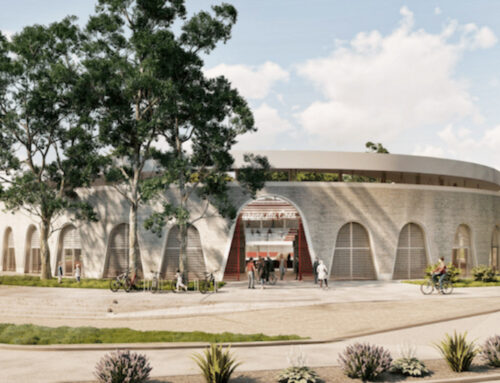The digital transformation of buildings has driven the integration of smart systems capable of managing, automating, and optimizing multiple functions. Among these systems, IP public address systems for buildings have become a key element to ensure effective, secure, and efficient communication in complex environments.
In this context, IP technology applied to public address systems not only enables the transmission of messages and alerts but also becomes a strategic tool within the ecosystem of Smart Buildings.
This article explores the role of IP public address systems for buildings as the backbone of communication in modern facilities, analyzing their features, advantages, and practical applications.
What is an IP public address system for buildings?
IP public address systems for buildings are sound communication systems that use Internet Protocol (IP) to transmit messages, music, or announcements over a data network. Unlike traditional analog systems, IP-based systems offer greater flexibility, scalability, and integration with other technologies used in smart buildings.
Instead of relying on dedicated cabling and hardware, IP public address systems for buildings leverage existing Ethernet networks, simplifying installation and reducing operational costs. Their distributed architecture also allows remote management of multiple building zones from a centralized interface—or even from mobile devices.
Main features of IP public address systems
IP public address systems for buildings include advanced functionalities that make them the preferred choice for most modern projects:
- High-quality audio: they provide clear message transmission even in noisy environments thanks to sound digitalization.
- Scalability: suitable for buildings of any size, from small office centers to large hospitals or shopping complexes.
- Zone management: different building areas can be configured with varying volumes, messages, or background music.
- Integration with security and evacuation systems: easily integrates with fire alarms, access control, or video surveillance.
- Remote control: allows full system management from a central location or via cloud-based platforms.
- Redundancy and reliability: many systems include backup mechanisms to ensure continued operation even in the event of network failure.
Applications in Smart Buildings
In smart buildings, IP public address systems serve as a communication hub connecting people, systems, and devices. Their use spans a wide range of environments:
1. Shopping centers and public spaces
In large venues, IP public address systems enable targeted announcements, background music, or emergency alerts. Automated scheduling and remote control capabilities significantly enhance operational efficiency.
2. Hospitals and healthcare facilities
Real-time, effective communication is vital in hospital settings. With IP systems, personalized alerts can be sent to different zones, evacuation messages can be broadcast, and responses coordinated—all from a single unified interface.
3. Office buildings
In smart offices, IP PA systems can integrate with calendars, attendance systems, or security protocols, enabling automated alerts in the event of incidents or scheduled welcome messages.
4. Educational institutions
Schools and universities can use IP systems for general announcements, emergency notifications, or intercom communication between classrooms, ensuring flexible and complete coverage.
5. Hotels
In hospitality environments, IP public address systems for buildings enhance the guest experience through background music, personalized messaging, and emergency alerts. Staff can also coordinate internal operations discreetly and efficiently.
6. Industrial facilities
Industrial settings require robust communication systems capable of operating under demanding conditions. IP public address systems for buildings provide a reliable solution for issuing instructions, coordinating tasks, or activating evacuation protocols—always with full coverage and reliability.
7. Airports and transport stations
In critical infrastructures such as airports, train stations, or transport hubs, clear message delivery—whether scheduled or in real time—is essential. IP technology enables centralized management, multilingual messaging, rapid updates, and full integration with passenger information systems.
Advantages of integrating IP public address systems into building infrastructure
IP public address systems for buildings offer several advantages that justify their selection over traditional systems:
- Operational efficiency: through centralized control and reduced dependence on complex physical infrastructure.
- Cost reduction: in both installation and maintenance by using existing IP networks.
- Improved safety: due to integration with emergency, evacuation, and access control systems.
- Flexibility and customization: allows for custom profiles based on building use, time of day, or specific needs.
- Easy maintenance and updates: software can be updated remotely without needing physical access to each device.
The importance of proper planning
Despite their many advantages, implementing an IP public address system for buildings requires careful planning. It is essential to conduct a preliminary study of the building’s specific needs, considering factors such as:
- Number of zones to be covered
- Ambient noise levels
- Compatibility with existing systems
- Legal and regulatory requirements
Conclusion
IP public address systems for buildings are far more than just communication tools—they are key components in transforming spaces into smarter, safer, and more connected environments. Their integration into Smart Buildings not only improves operational efficiency but also enhances safety and user experience.
In an increasingly demanding landscape, choosing the right IP public address solutions and implementing them properly is a strategic investment for the present and future of any modern building.





